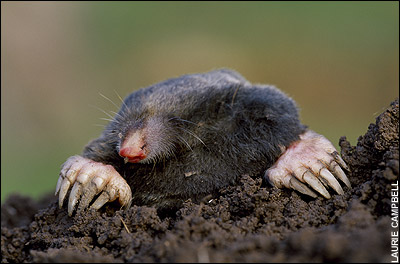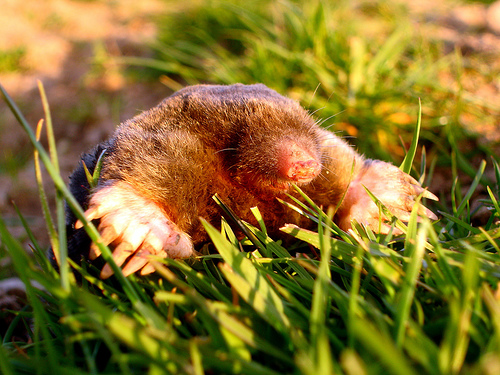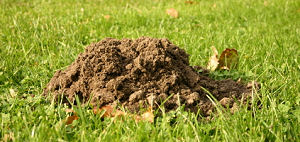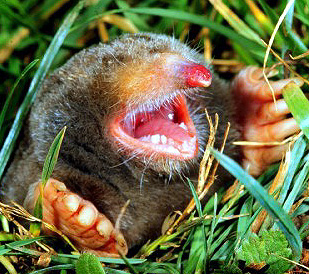Moles are members of the mammal family Talpidae in the order Soricomorpha. Moles live underground and burrow holes. Some species are aquatic or semi-aquatic. Moles have cylindrical bodies covered in fur with small or covered eyes; the ears are generally not visible. They eat small invertebrate animals living underground. A mole's diet primarily consists of earthworms and other small invertebrates found in the soil. The mole may also occasionally catch small mice at the entrance to its burrow. Because their saliva contains a toxin that can paralyze earthworms, moles are able to store their still living prey for later consumption.
They construct special underground "larders" for just this purpose; researchers have discovered such larders with over a thousand earthworms in them. Before eating earthworms, moles squeeze them between their paws to force the collected earth and dirt out of the worm's gut.An adult mole only weighs four ounces, and an average population density is only three to five moles per acre, and yet these small furry creatures can incite rage and despair in gardeners and defy all and every attempt to neutralize their activities.
Although similar in appearance to mice, moles are classified as insectivores, and are more closely related to shrews and bats than to rodents. They eat meat, primarily in the form of insects, spiders, grubs, millipedes, ants and earthworms. In this aspect of their lives they could be considered beneficial to gardeners, since they destroy a number of important soil insect pests. However, it's how they obtain their food that's at the bottom of their constant dispute with gardeners. Moles dig blindly through the soil and eat whenever they happen upon food. They have a very high metabolism and must eat a lot, often an amount of food equal to their body weight each day. To eat that much they have to find a lot of food and that means a lot of digging. In average garden or lawn soil a mole can dig at the rate of 12 to 15 feet per hour. The tunnels moles dig in search of food are just below the surface and the digging of these tunnels severs plant roots and causes grass and other plants to decline. In addition to their surface feeding tunnels moles also dig deeper tunnels, called runways, in which they make their nests and travel throughout their territory. The soil excavated from these runways are deposited on the surface in the form of mounds of loose soil called mole hills. An active mole or two can lay waste to a well tended lawn or garden in short order. In the long run their digging may actually improve the soil but in the short term they cause ugly, serpentine yellowing of the grass, ground that sinks as you walk over it, and the loss of prized perennials and bulbs.
Control - Trapping is the number one way of eradicating moles. Sonic devices don't work and are a waste of time and money, Gases are ok but should only be used by professional pest controller after a risk assessment of the area is complete, this treatment is not 100% as the mole runways are complex and moles can move away quickly .Firstly we locate the main mole run between molehills using a probe and set as many traps as is needed to trap the mole (usually 5-10 traps). It can take upto 2-3 weeks to trap them. we usually charge for the first visit and only charge again if a mole is caught in the trap.
Moles





